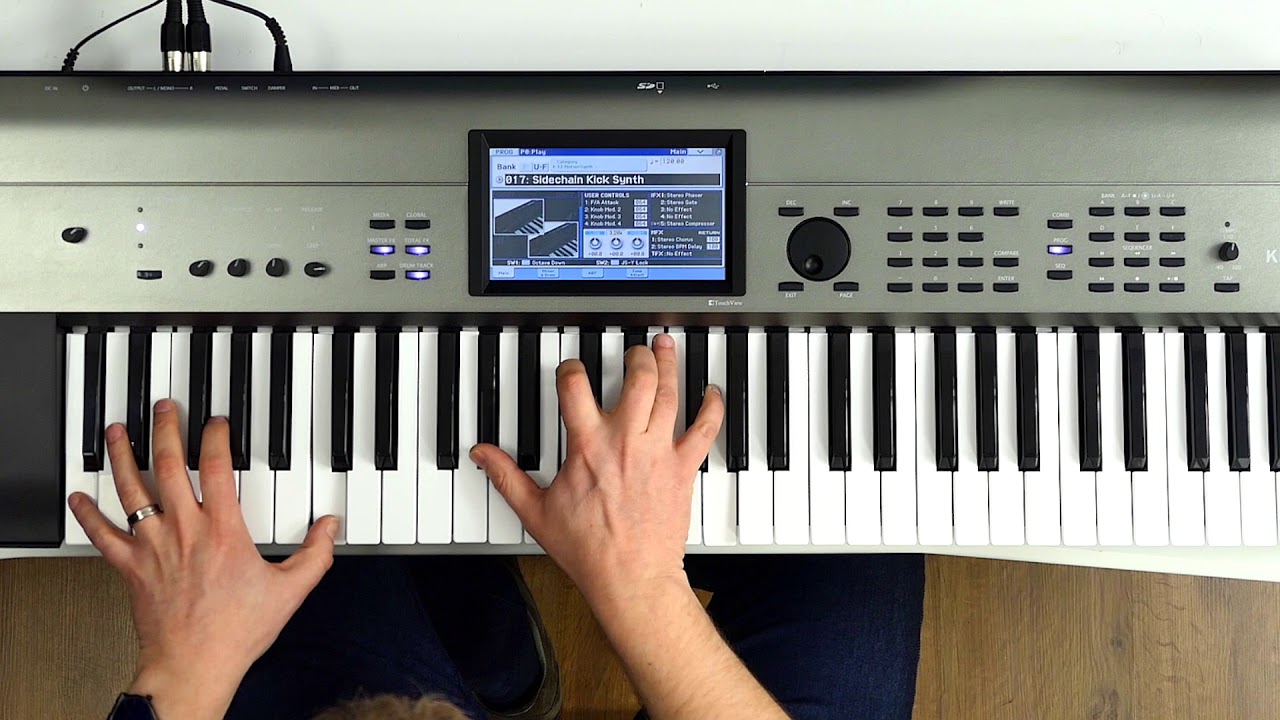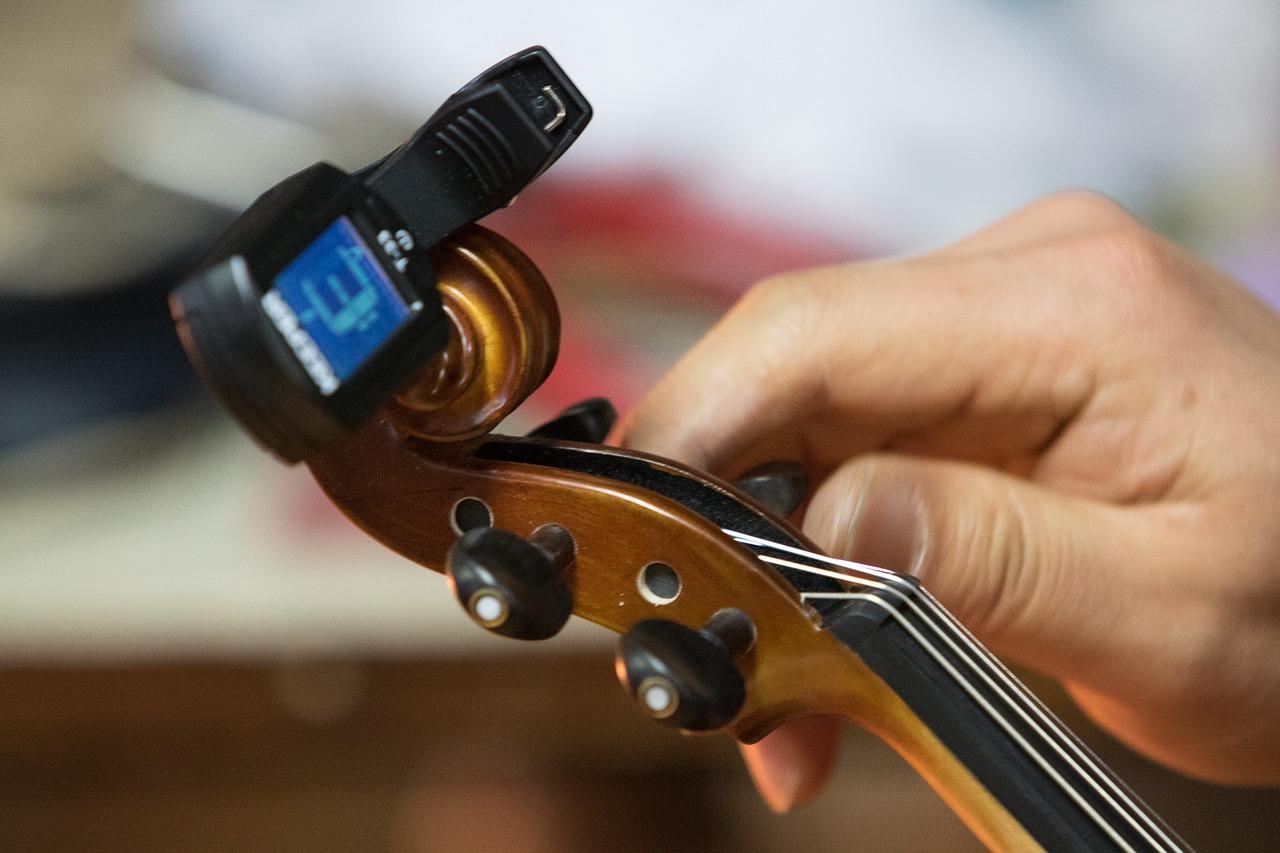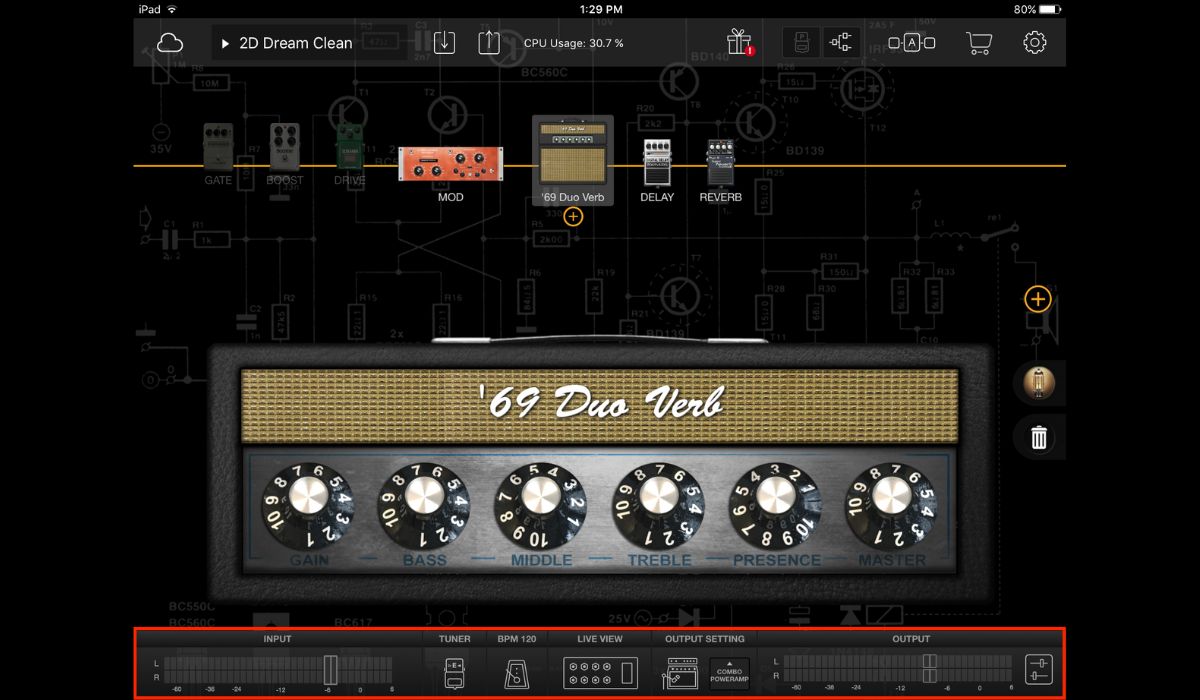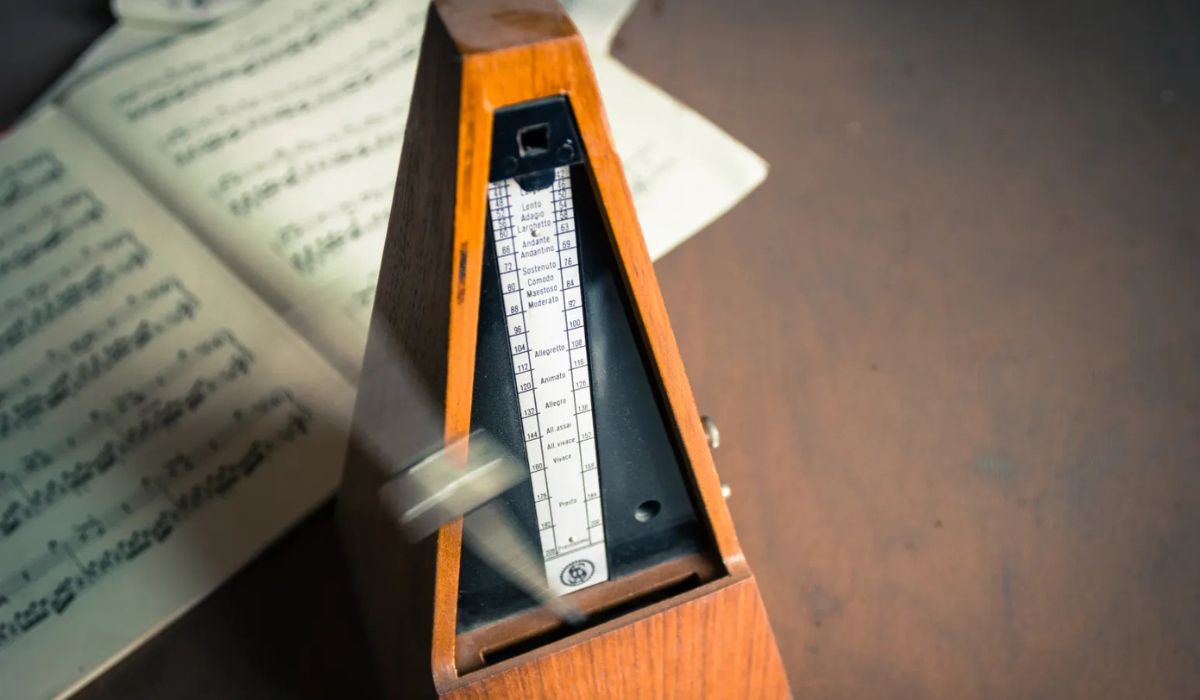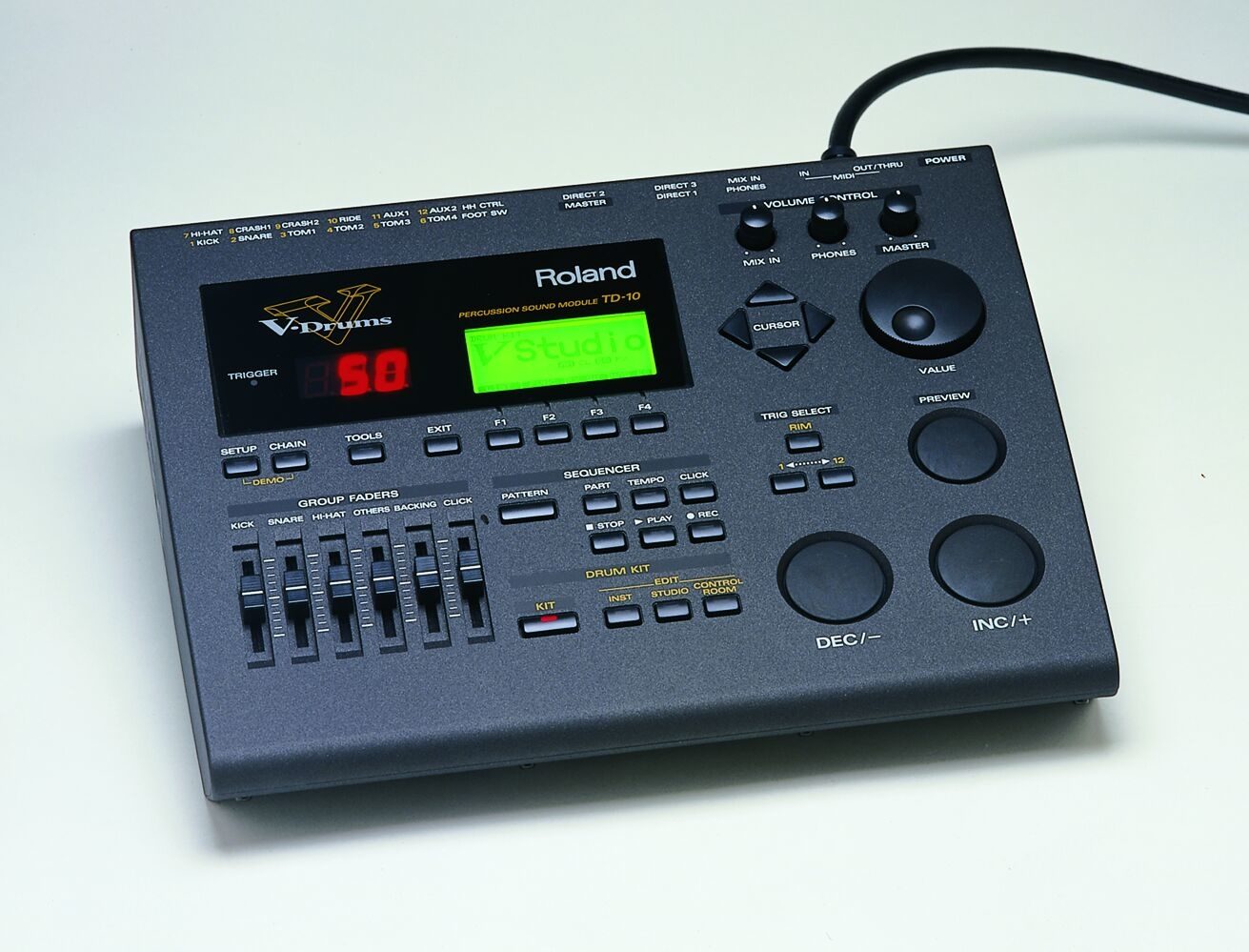Home>Production & Technology>Metronome>How To Use A Metronome For Relaxation
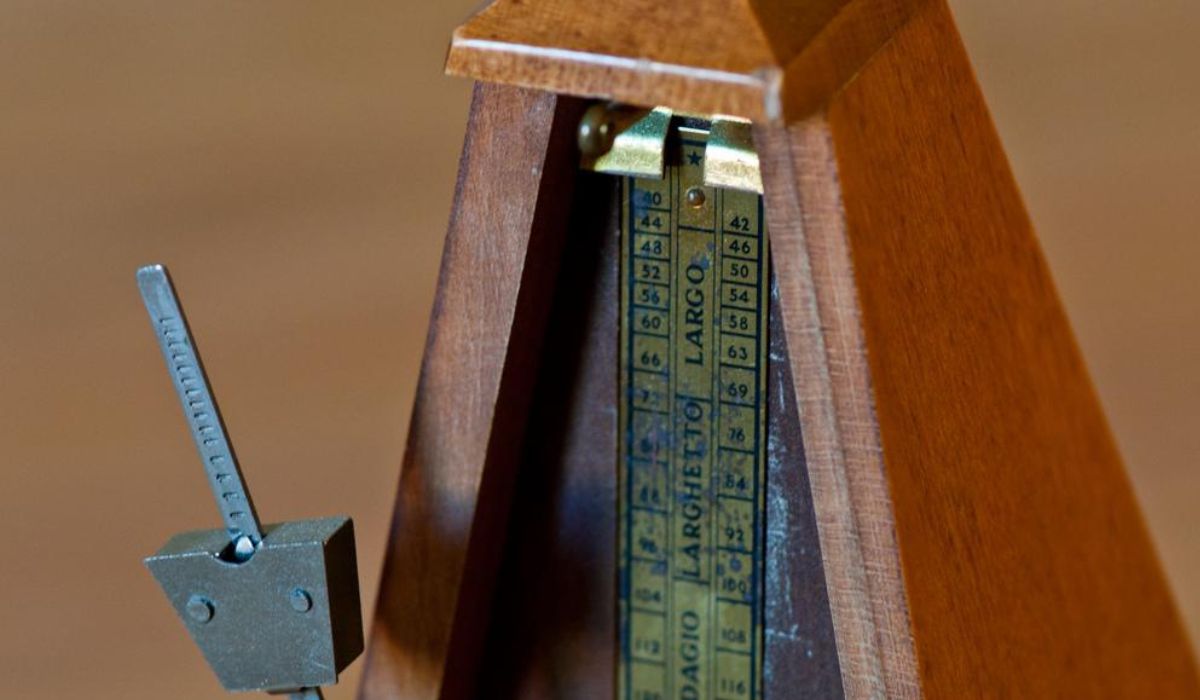

Metronome
How To Use A Metronome For Relaxation
Published: January 13, 2024
Learn how to use a metronome to achieve relaxation and improve your rhythm. Discover the benefits of incorporating a metronome into your practice routine.
(Many of the links in this article redirect to a specific reviewed product. Your purchase of these products through affiliate links helps to generate commission for AudioLover.com, at no extra cost. Learn more)
Table of Contents
Introduction
Welcome to the world of relaxation through rhythm. In our fast-paced modern lives, finding moments of calm and tranquility can be a challenge. However, with the help of a metronome, you can harness the power of rhythm to ease your mind, body, and soul. A metronome is not just a tool for musicians; it can also be a valuable companion in your journey to inner peace and relaxation.
So, what exactly is a metronome? A metronome is a device that produces a steady pulse or beat at a specific tempo. Traditionally used by musicians to practice timing and rhythm, it can also be a powerful aid in relaxation techniques. The consistent beat of a metronome can help synchronize your thoughts, calm your mind, and bring a sense of harmony to your body.
The benefits of using a metronome for relaxation are numerous. First and foremost, it provides a focal point for your attention. By focusing on the rhythm and allowing yourself to become immersed in the sound of the metronome, you can let go of the outside world and enter a state of deep relaxation. This can be particularly helpful for individuals who find it difficult to quiet their mind or experience racing thoughts.
In addition, using a metronome for relaxation can help regulate your breathing patterns. As the metronome beats consistently, you can synchronize your breath with the rhythm, promoting deep, rhythmic breathing. This can activate the body’s relaxation response, reducing stress and promoting a sense of calm.
Lastly, incorporating a metronome into your relaxation routine can provide a sense of structure and discipline. Just as musicians use a metronome to practice and improve their timing, you can use it to cultivate a consistent relaxation practice. By setting aside dedicated time each day for metronome relaxation exercises, you can develop a routine that supports your overall well-being.
Next, we’ll explore how to set up your metronome and get started with relaxation techniques that will leave you feeling refreshed and rejuvenated.
What is a Metronome?
A metronome is a device that produces a regular, constant beat at a specific tempo. It is commonly used by musicians to practice their timing and rhythm. Traditionally, a metronome consists of a mechanical pendulum or a digital interface that generates a sound or visual cue to indicate the desired tempo.
Metronomes come in various shapes and sizes, ranging from classic mechanical models with a swinging pendulum to compact digital metronomes that can be easily carried in a pocket. Some metronomes also offer additional features such as different time signatures, adjustable beats per minute (BPM), and even programmable rhythms.
Regardless of its form, the primary purpose of a metronome is to provide a regular and consistent beat to assist with timing and tempo control. Musicians use it to practice playing at different speeds, improve their sense of rhythm, and develop better timing accuracy.
However, the benefits of a metronome extend beyond the realm of music. It can also be a valuable tool for relaxation and stress reduction. By offering a steady and predictable rhythm, a metronome can help create a sense of stability, flow, and relaxation.
When used in relaxation exercises, the metronome becomes more than just a timekeeping device. Its rhythmic beat serves as a focal point for your attention, allowing you to enter a state of deep relaxation and mindfulness.
Whether you are a musician looking to enhance your playing or an individual seeking relaxation and mindfulness, a metronome can be an invaluable tool. So, let’s explore the various relaxation techniques you can try with a metronome to bring calmness and serenity into your life.
Benefits of Using a Metronome for Relaxation
Using a metronome as a relaxation tool offers several benefits that can enhance your overall well-being. Here are some of the key advantages:
- Focus and Mindfulness: The consistent beat of a metronome provides a focal point for your attention. By directing your focus to the rhythm, you can let go of distractions and immerse yourself in the present moment. This promotes mindfulness and helps to quiet the mind.
- Rhythmic Breathing: Breathing exercises are a fundamental aspect of relaxation techniques. The rhythmic beat of a metronome can serve as a guide for your breathing patterns. As you synchronize your breath with the tempo, you can achieve deep, rhythmic breathing, which has a calming effect on the body and activates the relaxation response.
- Regulation of Heart Rate and Blood Pressure: When you engage in relaxation exercises with a metronome, the consistent beat helps to regulate your heart rate and blood pressure. By establishing a steady pace, the metronome promotes a sense of stability and balance within your body.
- Reduction of Stress and Anxiety: Relaxation techniques with a metronome can be highly effective in reducing stress and anxiety. The rhythmic sound serves as a soothing background noise, helping to relax your nervous system and calm your thoughts.
- Improved Sleep: Regular practice of metronome relaxation techniques can contribute to better sleep quality. By incorporating the rhythm into your bedtime routine, you can establish a sense of relaxation and prepare your mind and body for restful sleep.
- Promotion of Overall Well-being: Using a metronome for relaxation can have a positive impact on your overall well-being. It offers a dedicated time and space for self-care, allowing you to prioritize your mental and emotional health. It can also enhance your ability to cope with daily stressors and lead a more balanced and fulfilling life.
As you can see, the benefits of using a metronome for relaxation are wide-ranging and can significantly improve both your mental and physical well-being. In the following sections, we will explore various techniques and exercises that you can incorporate into your relaxation routine with the help of a metronome.
Setting Up Your Metronome
Before you can start using a metronome for relaxation, it’s important to know how to set it up properly. Here are some essential steps to get you started:
- Selecting the Right Metronome: There are various types of metronomes available, ranging from traditional mechanical models to digital ones. Choose a metronome that suits your preferences and needs. Digital metronomes often offer more features, such as adjustable BPM and different sounds.
- Setting the Tempo: The tempo refers to the speed or pace at which the metronome beats. Consider a tempo that feels comfortable for you and aligns with your relaxation goals. Start with a slower tempo and gradually increase it as you become more comfortable.
- Choosing the Sound: Metronomes typically offer different sound options to indicate the beat. Explore the available sounds and select the one that resonates with you. Some common choices include a click, beep, or even a gentle chime.
- Creating a Relaxation Environment: Find a quiet and calm space where you can practice your relaxation exercises without distractions. It could be a peaceful corner of your home or a serene outdoor setting. Ensure that the atmosphere supports relaxation and tranquility.
- Positioning the Metronome: Place the metronome within your line of sight or at a comfortable distance where you can easily hear the sound. It’s essential to position it in a way that allows you to maintain a relaxed posture without straining your neck or eyes.
- Adjusting the Volume: Experiment with the volume settings on your metronome to find a level that is audible but not overpowering. The sound should be soothing and gentle, enhancing your relaxation experience rather than causing discomfort.
- Setting the Duration: Decide on the duration of your relaxation practice with the metronome. Start with shorter sessions, such as 10-15 minutes, and gradually increase the length as you become more accustomed to the practice.
Once you have set up your metronome according to your preferences, you are ready to embark on your journey of relaxation and well-being. In the following sections, we will explore various relaxation techniques that you can incorporate into your practice to maximize the benefits of using a metronome for relaxation.
Breathing Exercises with a Metronome
Breathing exercises are an essential component of relaxation techniques, and incorporating a metronome can enhance their effectiveness. The rhythmic beat of the metronome can guide and synchronize your breath, promoting deep relaxation and stress reduction. Here are a few breathing exercises you can try with a metronome:
- 4-7-8 Breathing: This technique, also known as “relaxing breath,” can help calm your nervous system and induce a state of deep relaxation. Set your metronome to a comfortable tempo, inhale slowly and deeply for a count of four, hold your breath for a count of seven, and exhale slowly for a count of eight. Repeat this sequence for several minutes, focusing on the rhythm of your breath and the beats of the metronome.
- Box Breathing: This technique involves equal durations of inhalation, breath retention, exhalation, and another breath retention, creating a square-shaped pattern. Set your metronome to a tempo of your choice. Inhale for a count of four, hold your breath for a count of four, exhale for a count of four, and hold your breath again for a count of four. Continue this box breathing pattern, allowing the metronome to guide your breath and maintain a steady rhythm.
- Deep Diaphragmatic Breathing: This exercise focuses on engaging the diaphragm and promoting a full breath. Set your metronome to a comfortable tempo and place one hand on your chest and the other on your abdomen. Inhale deeply through your nose, allowing your abdomen to rise as you fill your lungs with air. Exhale slowly through your mouth, feeling your abdomen fall as you release the breath. Coordinate your breath with the beats of the metronome, aiming for smooth and relaxed inhalations and exhalations.
- Resonant Breath: This technique combines slow breathing with a focus on the resonance of each breath. Set your metronome to a gentle tempo. Inhale slowly through your nose, imagining the breath resonating and expanding deep into your body. Exhale through your mouth, auditory or silently, imagining the breath releasing and flowing outward. Repeat this cycle, allowing the metronome’s beats to guide the duration and pace of each breath.
Remember to adjust the tempo of the metronome to a comfortable pace that allows you to relax and synchronize your breath smoothly. Experiment with different breathing exercises and find the techniques that resonate most with you. Consistent practice of these exercises can help calm your mind, reduce stress, and promote a sense of inner peace.
In the next section, we will explore another relaxation technique, progressive muscle relaxation, that can be combined with a metronome to deepen your relaxation experience.
Progressive Muscle Relaxation with a Metronome
Progressive Muscle Relaxation (PMR) is a technique that involves tensing and releasing different muscle groups to induce a state of deep relaxation. When combined with a metronome, PMR can become even more effective, as the rhythmic beat assists in guiding the tension and release process. Here’s how you can practice PMR with a metronome:
- Prepare your environment: Find a quiet and comfortable space where you can lie down or sit in a relaxed position. Set up your metronome to a tempo that feels calming and soothing to you.
- Start with deep breathing: Take a few deep breaths to center yourself and relax your mind and body. Allow the beat of the metronome to guide your breath, synchronizing your inhales and exhales with its rhythm.
- Focus on one muscle group: Begin by slowly tensing a specific muscle group, such as your hands or shoulders. Hold the tension for a few seconds as you maintain awareness of the sensation. Then, release the tension completely, allowing the muscles to relax and let go.
- Transition to other muscle groups: Move through your body, progressively tensing and relaxing each major muscle group. You can start from your toes and work your way up, or vice versa. Be mindful of the sensation of tension and release in each muscle group, allowing the metronome’s beat to guide the rhythm of the exercise.
- Maintain a steady pace: Use the metronome as a guide to maintain a consistent pace throughout the exercise. The rhythmic beat helps facilitate a smooth transition as you move from one muscle group to another, promoting a sense of flow and relaxation.
- Repeat as desired: You can repeat the PMR exercise with the metronome for several cycles, focusing on deep relaxation and releasing tension from your entire body. Allow yourself to sink deeper into a state of relaxation with each repetition.
Progressive Muscle Relaxation with a metronome is a powerful technique for reducing physical tension, releasing stress, and inducing a profound sense of relaxation. Through consistent practice, you can train your muscles to become more aware of tension and learn to release it, promoting overall well-being.
In the next section, we will explore how to incorporate a metronome in guided meditation, another effective tool for relaxation and mindfulness.
Guided Meditation with a Metronome
Guided meditation is a powerful practice for quieting the mind, cultivating mindfulness, and promoting relaxation. When combined with a metronome, guided meditation can become even more impactful, offering a steady rhythm to anchor your attention. Here’s how you can incorporate a metronome into your guided meditation practice:
- Create a peaceful environment: Find a quiet and comfortable space where you can sit or lie down without distractions. Set up your metronome to a tempo that feels soothing and calming to you.
- Choose a guided meditation: Select a guided meditation that resonates with your intentions and relaxation goals. You can find guided meditations online or through various meditation apps that offer a wide range of themes and techniques.
- Begin with deep breathing: Take a few deep breaths to center yourself and prepare for the meditation. Allow the rhythm of the metronome to guide your breath, inhaling and exhaling in sync with its beats.
- Follow the guidance: As the guided meditation starts, let the voice or instructions guide your focus and attention. Use the rhythmic beat of the metronome as an anchor to stay present and centered throughout the meditation.
- Embrace stillness and silence: During moments of silence in the guided meditation, allow yourself to sink deeper into the rhythm of the metronome. Use its beat as a gentle reminder to return to the present moment, observing any sensations, thoughts, or emotions that arise.
- Practice mindfulness: As you engage in the guided meditation, cultivate mindfulness by observing your breath, body, and mind. Allow the metronome’s rhythm to amplify your awareness and deepen your state of mindfulness.
- Conclude with gratitude: At the end of the guided meditation, take a moment to express gratitude for the practice and the opportunity to cultivate relaxation and mindfulness. Take a few deep breaths and slowly transition back to your everyday awareness.
By incorporating a metronome into your guided meditation practice, you can enhance your ability to stay present, calm your thoughts, and deepen your state of relaxation. The consistent beat of the metronome serves as a reliable anchor, fostering a sense of groundedness and tranquility throughout your meditation.
In the next section, we will explore how you can integrate metronome relaxation techniques into your daily routine to create a sustainable practice for long-term benefits.
Integrating Metronome Relaxation Techniques into Daily Routine
To fully reap the benefits of metronome relaxation techniques, it is essential to integrate them into your daily routine. By making relaxation a regular practice, you can experience long-term benefits and create a sustainable habit. Here are some tips for incorporating metronome relaxation techniques into your daily routine:
- Schedule dedicated relaxation time: Set aside specific time slots in your daily schedule for metronome relaxation. Treat it as an important appointment with yourself and prioritize this time for self-care and relaxation.
- Start small and gradually increase: Begin with shorter sessions, such as 10-15 minutes, and gradually increase the duration as you become more comfortable and consistent with your practice. Even a few minutes of relaxation each day can make a significant difference in your overall well-being.
- Find consistency: Aim to practice metronome relaxation techniques at the same time each day, if possible. Establishing a routine helps train your mind and body to anticipate and benefit from these dedicated moments of relaxation.
- Customize techniques to your needs: Experiment with different metronome relaxation techniques and tailor them to your preferences and needs. Find the techniques that resonate with you and bring you the most relaxation and calmness.
- Combine metronome relaxation with other activities: Incorporate metronome relaxation techniques into other daily activities, such as before bedtime, during breaks at work, or as part of your morning routine. This can help you seamlessly integrate relaxation into your daily life.
- Stay committed and be patient: Like any new habit or practice, it takes time and commitment to experience the full benefits of metronome relaxation. Be patient with yourself, stay consistent, and trust in the cumulative effects of regular practice.
- Listen to your body: Pay attention to how your body and mind respond to different metronome relaxation techniques. Adjust the tempo, duration, and exercises as needed to suit your comfort and relaxation levels.
- Track your progress: Keep a journal or use a meditation app to track your progress and reflect on how metronome relaxation techniques are positively impacting your life. Noting your experiences and observations can help you stay motivated and appreciate the progress you are making.
By integrating metronome relaxation techniques into your daily routine, you can cultivate a habit of relaxation and mindfulness, leading to a more balanced and serene life. Remember that consistency is key, so commit to regular practice and enjoy the benefits that come with dedicated relaxation time.
As we conclude, let’s reflect on the profound impact that metronome relaxation can have on our mental, emotional, and physical well-being.
Conclusion
Incorporating a metronome into your relaxation routine can be a game-changer in your quest for inner peace and calmness. From breathing exercises to progressive muscle relaxation and guided meditation, the rhythmic beat of a metronome provides a focal point and a steady rhythm to enhance your relaxation experience.
Using a metronome for relaxation offers a multitude of benefits. It helps you focus and be present in the moment, regulates your breathing patterns, reduces stress and anxiety, and promotes better sleep. The structure and discipline that come with incorporating a metronome into your routine can support your overall well-being and improve your ability to navigate daily stressors.
Remember to set up your metronome properly, select a tempo and sound that resonate with you, and create a peaceful environment for your relaxation practice. Explore various techniques such as breathing exercises, progressive muscle relaxation, and guided meditation, adapting them to your needs and preferences.
By dedicating regular time to metronome relaxation, you can integrate these techniques into your daily routine. Start small, gradually increase the duration, and find consistency. Listen to your body, adjust as needed, and track your progress to stay motivated and appreciate the positive effects of your practice.
Embrace the power of rhythm and relaxation, and let the metronome guide you towards a state of deep calmness and tranquility. Make metronome relaxation a priority in your life, and experience the incredible benefits it can bring to your mind, body, and soul.



